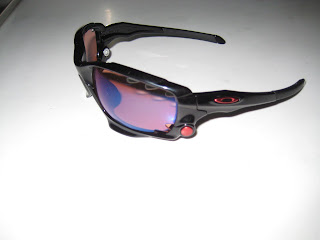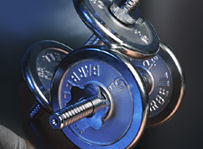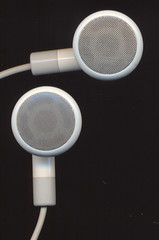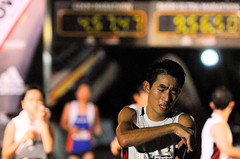


Some trivia about Wimbledon, which is probably much better know for its aces than races. Aces or races, you'll ask? There's Wimbledon, the world's leading tennis tournament staged by the All England Lawn Tennis and Croquet Club which was founded in 1868. But I'm sure not many of you know that there's also a close connection between tennis and cross-country running .
Both sports were "born" in the same town, Wimbledon, England, 10 miles south of London. One sport has exploded into a world wide TV spectacular with huge summer crowds, big prize money (
£12, 550,000 this year), high status, champagne and of course its famous strawberries and cream. The other is virtually unchanged - lonely, muddy and under appreciated, just like the way it was.
The first open cross-country race took place on the Wimbledon Common on December 7, 1867 while the first modern tennis championship was started about a mile away a decade later on July 9, 1877. That first Wimbledon Common race was probably the progenitor of road racing and marathon races as we know them today.
Thanks to the BBC, Wimbledon tennis was the first sport to be broadcast on radio and world wide TV. More than 800 million viewers follow the event on TV while more than 400,000 spectators attend the 2-week long tournament which remains the only Grand Slam event still played on grass.
Those of you who have ran cross-country races here in Singapore or any where else know the deal. To be a good runner over the course, you have to negotiate terrain that is usually up or down, slanted perhaps but seldom flat. Whilst running in your racing flats, you 'll be able to feel every ridge, root and rock under the slippery leaves. The course will often present a new challenge at every turn, which demands a total combination of balance, aerobic fitness and leg strength. All this can add benefit to your character. My first real running race was a cross-country race. This is how I gradually built my strength up -training and running over cross-country which later paved the way to me finding success racing on the track and roads and later in triathlon as well.
Our only "real" cross-country course in Singapore is Macritchie Reservoir, which over the years has been landscaped to make it less "wild" and more runner friendly. At the Wimbledon Common though, it has remained an undeveloped public park where you can easily run 20 miles on the 1140 acres without retracing steps.
Tennis and cross-country running both have great history and tradition, but are at absolute ends of the spectrum. One is entirely formalized and structured, the result of modern rule-making. The latter is completely unstructured, almost primeval, more of a participant sport with few spectators who certainly don't go to be seen.
While I will definitely watch the "live" telecast of the tennis matches beginning tomorrow, I prefer to be running cross country. I am moving, I am free, there are no lines, no fences, no boundaries or schedules.









































